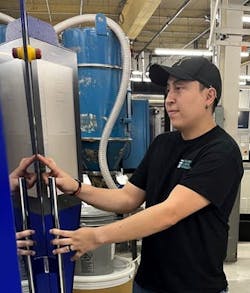Surveys and employment statistics highlight the importance of workforce development, amid a persistent labor shortage. According to the U.S. Bureau of Labor Statistics:
For example, in “The Manufacturing Experience: The Role of Culture and Employee Engagement in Workforce Attraction and Retention,” published in September by the Manufacturing Institute’s Center for Manufacturing Research, with support from Colonial Life, surveys found that the most important factors for employees in considering whether to stay included:
- company culture (60.3 percent of manufacturing employees)
- stability/job security (55 percent)
- enjoying the work (54.4 percent) / doing a job that makes a difference (48.5 percent)
- flexibility (48.8 percent) / work-life balance (40.3 percent)
- opportunities to learn and advance (42.1 percent)
Employers reported the following as important retention tools:
- compensation (81 percent)
- increased flexibility (65 percent)
- additional training and professional-development opportunities (64.2 percent)
- expanded benefits (58.4 percent)
- diversity, equity and inclusion efforts (40.2 percent)
- involvement with volunteer organizations and the community (36.5 percent)
In addition to other perks, companies reported offering the following:
- tuition assistance (71.4 percent)
- supervisor engagement and outreach (66.7 percent)
- information about available training (62.7 percent)
Meanwhile, “The Manufacturing Experience: The Role of Culture and Employee Engagement in Workforce Attraction and Retention,” published in June by the Manufacturing Institute’s Center for Manufacturing Research, with support from Colonial Life offered some of the following takeaways:
- 96.8 percent of respondents said they stay in their jobs because of their colleagues, including co-workers and manager.
- 60.3 percent of manufacturing employees said that the company’s culture, including its reputation and values, were important to their decision to stay at their current company. Other factors included stability/job security (55 percent), the fact that they enjoy the work they do (54.4 percent) or that their job makes a difference (48.5 percent), having workplace flexibility (48.8 percent), ) and being able to pursue learning and career advancement opportunities (42.1 percent). Work-life balance (40.3 percent) and a convenient location (35.3 percent) also were important factors.
- 24.1 percent of respondents said they remained at their current job because no other opportunities were open to them.
- 81 percent of respondents said that more compensation was one of the top ways that they engaged their employees. Also making the list were increased flexibility (65 percent); additional training and professional development opportunities (64.2 percent); expanded benefits (58.4 percent); diversity, equity and inclusion efforts (40.2 percent); involvement with the community and volunteer organizations (36.5 percent).
- 71.4 percent of companies reported providing tuition assistance; 66.7 percent, supervisor engagement and outreach; and 62.7 percent, information about available training.
Finally, in its “The State of Global Workplace Culture in 2023: An International Model for Building Better Workplaces,” the Society for Human Resource Management found results reiterating the influence on workplace culture on companies' ability to retain workers. Of employees who rated their organization’s culture as good or excellent:
- 79 percent were more likely to feel satisfied at work,
- 83 percent were less likely to actively look for a new job,
- 78 percent were less likely to have actively looked for a new job in the previous 6 months.
Read up on ways you can help build your workforce at www.plasticsmachinerymanufacturing.com/53079152, www.plasticsmachinerymanufacturing.com/21269499, www.plasticsmachinerymanufacturing.com/53073241, or download an eBook on the subject at www.plasticsmachinerymanufacturing.com/21296040, or a podcast at www.plasticsmachinerymanufacturing.com/53077091.
About the Author
Karen Hanna
Senior Staff Reporter
Senior Staff Reporter Karen Hanna covers injection molding, molds and tooling, processors, workforce and other topics, and writes features including In Other Words and Problem Solved for Plastics Machinery & Manufacturing, Plastics Recycling and The Journal of Blow Molding. She has more than 15 years of experience in daily and magazine journalism.

